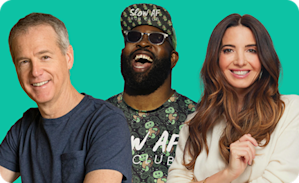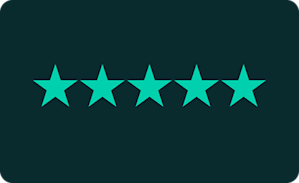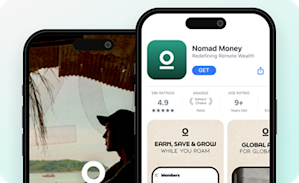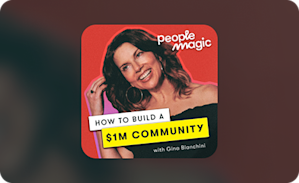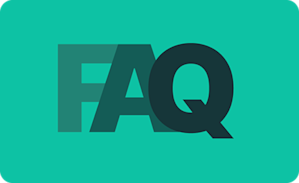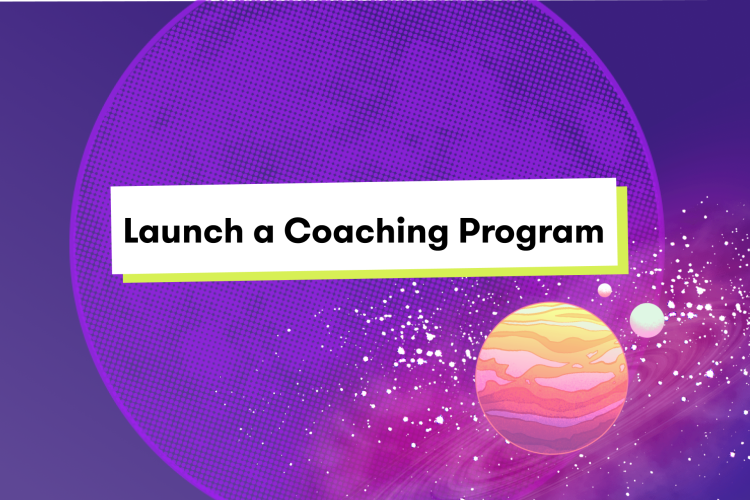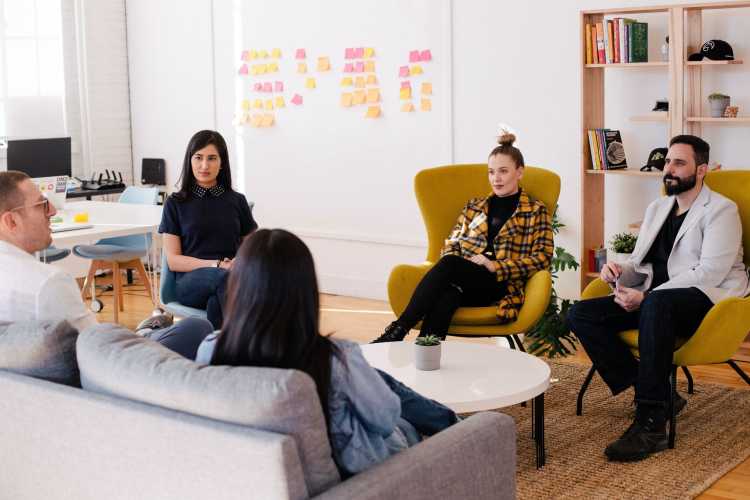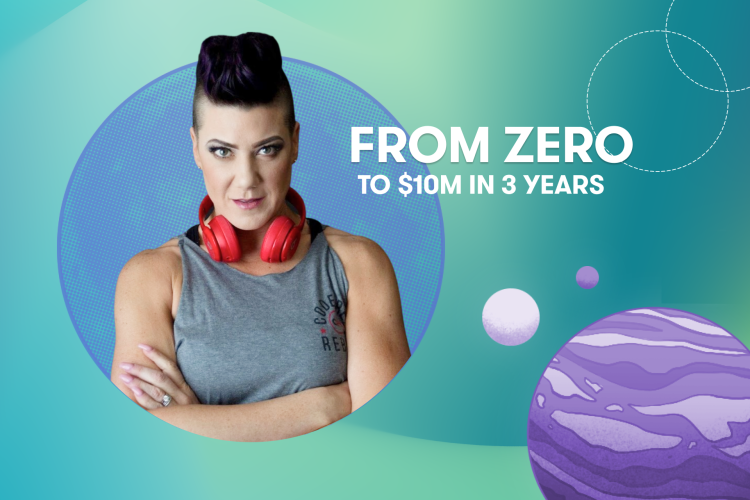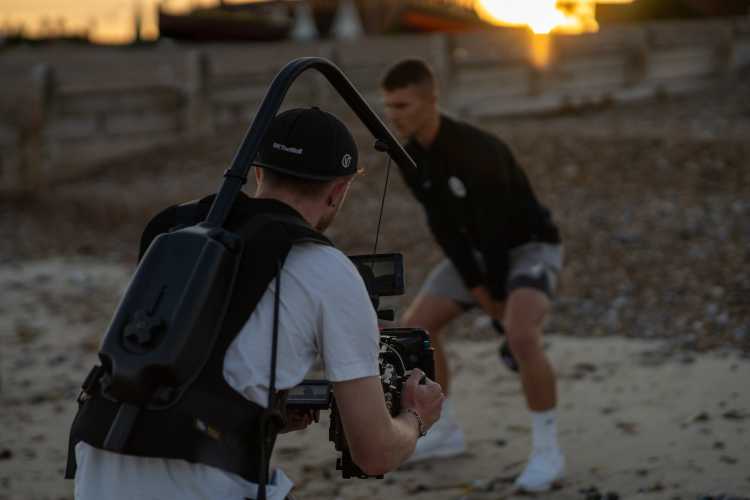Coaching
7 Mistakes to Avoid with High-Ticket Coaching (+ How to WIN)
Growing a high-ticket coaching program is a profitable venture but leads to some predictable lessons—here’s what to learn sooner than later.
Author
Mighty Team
Last Updated
July 31, 2025
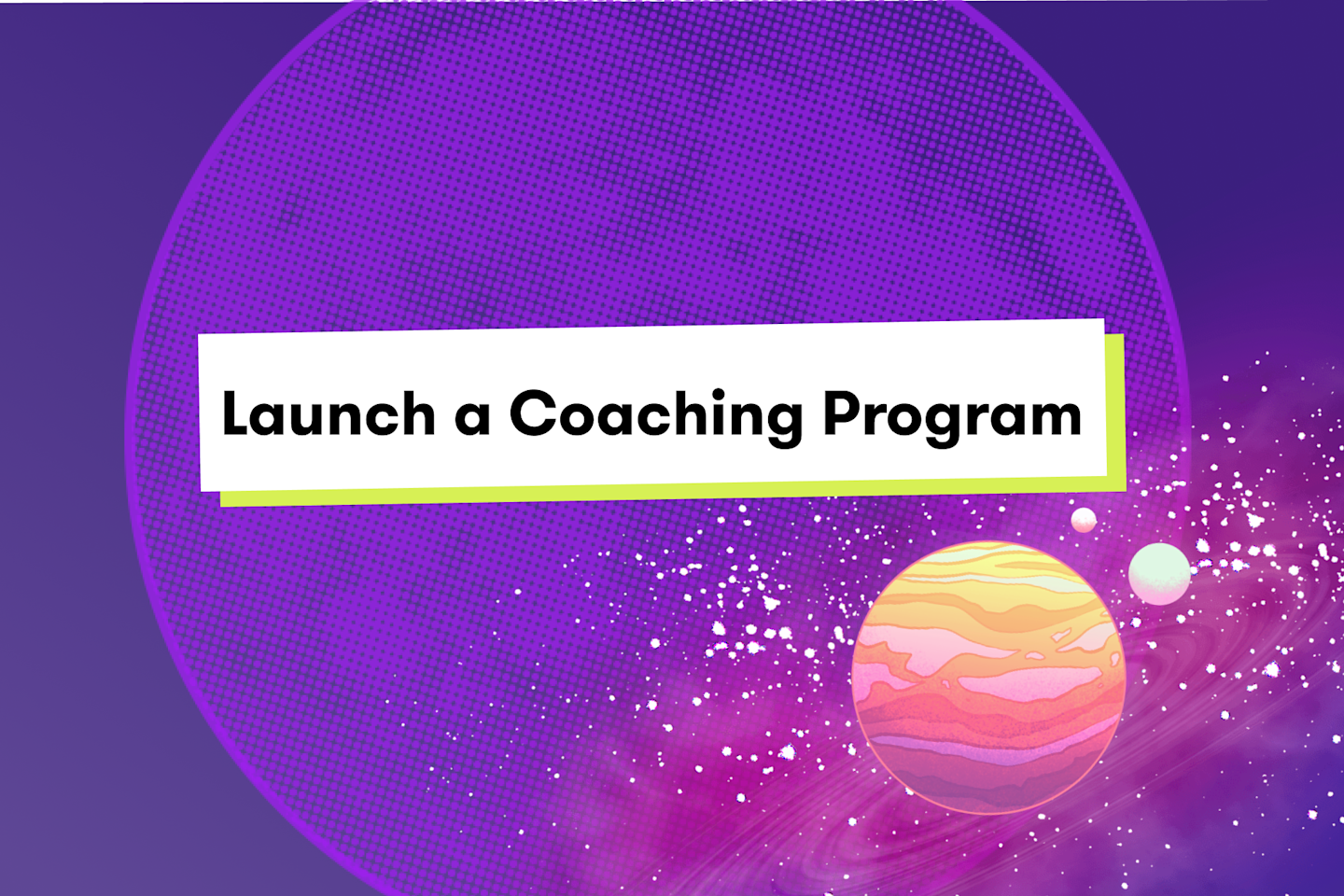
A high-ticket coaching program—which we define as a bundle of online courses, group coaching calls, and direct access to a few top-tier experts— is designed for people interested in achieving substantial results and transformation.
Here’s what we see. In our data across thousands of memberships, high-ticket coaching usually starts at $999. Most offers are in the $2,000 to $10,000 range. And tiered options may add even more (e.g. 1:1 coaching).
We’ve seen mind-blowing businesses:
Turning a handful of courses and expertise into a true high-ticket course business that scales quickly.
Small teams doing $2 -$3 million a year in membership and coaching revenue.
Amazing!
But there’s skepticism out there. Folks asking, “Is high-ticket coaching a scam?” or “Isn’t this too good to be true?”
And you know what?
We SHOULD be asking this! Because there are a lot of high-ticket coaches out there promising–but not delivering–high-ticket results.
So let’s look at some facts. We’ll share what we’ve learned about doing high-ticket coaching well and what to avoid.
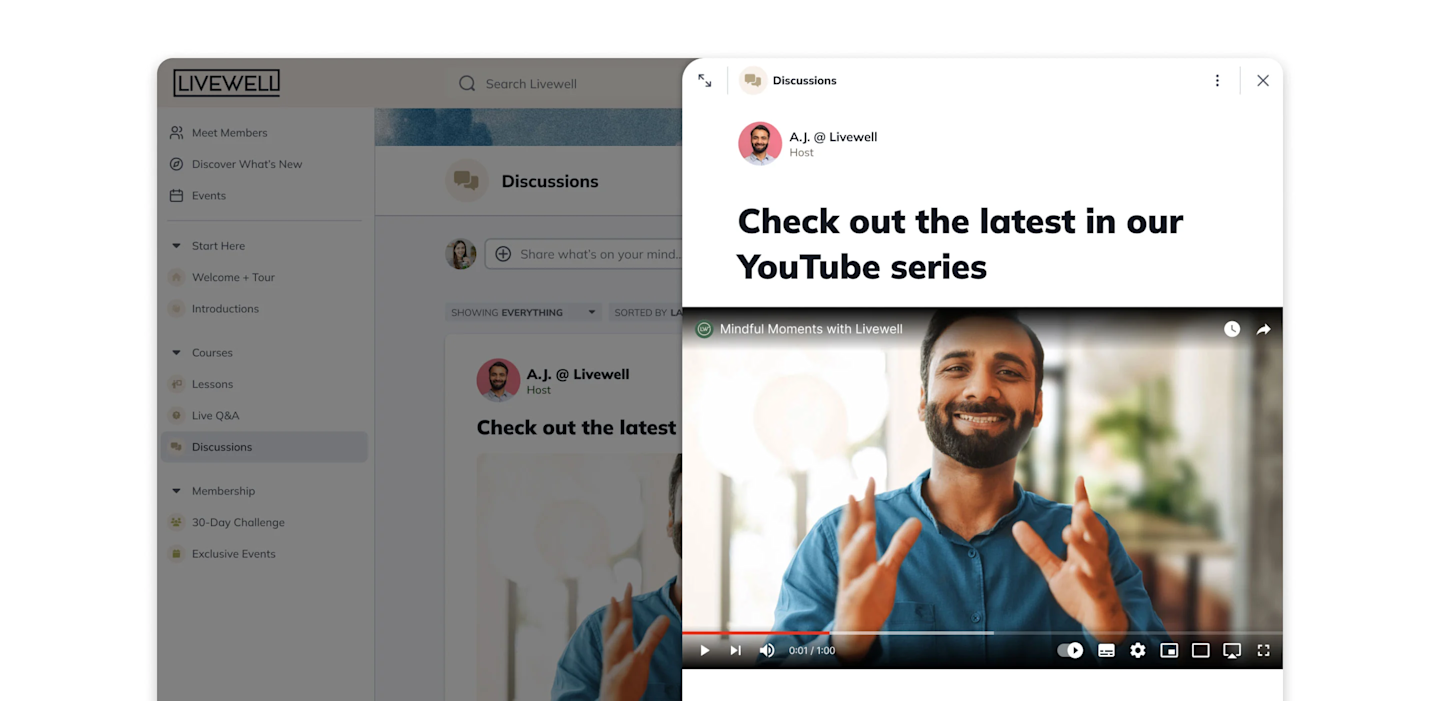
Is high-ticket coaching a scam?
Let’s imagine a machine. It promises that if you put $1,000 in you get $10,000 out. Is that a scam?
Maybe. It becomes a scam if you don’t get what you were promised!
That’s really the question. When coaches make promises that they can’t honor or simply don’t try to keep, then yes. That’s a scam.
When a coach charges a lot, but helps clients get incredible results that are worth the price, that’s a recipe for happy clients.
It’s not about the money. It’s about the results. It’s about the transformation.
High-ticket coaches are as good as the results they can help clients get.
Why high-ticket coaching can get results
Here’s the thing. High-ticket coaching can actually produce results. In fact, there can be a close connection between high-ticket prices and success.
Yes, we know this sounds odd.
But here are some things to think about.
Pay more = pay more attention: It’s human nature to equate money with value. And–it turns out–that can be a real psychological motivator. Ever bought an online course for $25 and never finished? The thing is, when we pay more it boosts our focus and motivation.
High-ticket is relative: The term means different things depending on your income. We all have an amount that it hurts to waste. For a student, it might be $20. For a CEO it might be $2,000. Getting people to pay attention means finding a price point that fits their income.
High-ticket motivates a coach too: Most coaches are not scammers. In fact, most desperately want their clients and members to get incredible results. Instead of trying to serve 1,000s of people at low prices, going high-ticket can help great coaches go all in on fewer members.
Results are worth it: We don’t complain if we get the results we want. Hey, if we paid a high-ticket price, we agreed that the result was worth it to us. The trouble comes when we don’t get the results.
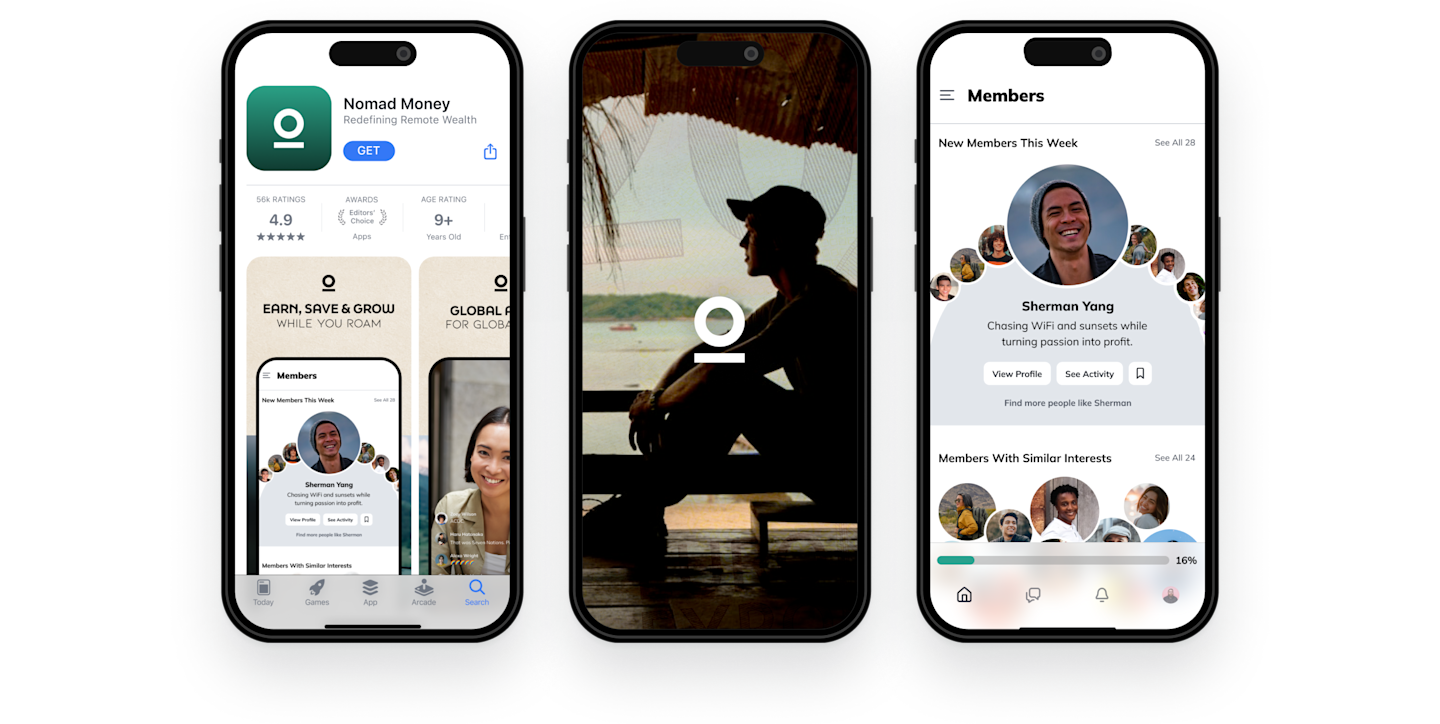
High-ticket coaching red flags
Whether you’re a high-ticket coach or shopping for one, these are some GLARING red flags. 🚩🚩
High-pressure decision making. High-ticket purchases should be made with both eyes open. No rush. No YOU ONLY HAVE TEN MINUTES LEFT! Just all the time you need to make sure it’s the right decision.
Buying on debt. “Can’t afford it? Put it on your Visa! You’ll totally earn it back!” Asking people to finance high-ticket coaching with debt is a red flag.
Big on promises, low on testimonials. “I’ve helped hundreds of clients earn $10,000/mo in their sleep!” That’s a pretty big claim that should require some big evidence. And even testimonials on a website can be faked.
They flash the bling. Private jets. Sipping margaritas by the pool. Promising the lifestyle you could have if you just shelled out the cash. This is selling a dream, not a product or service.
How to win high-ticket coaching (ethically)
1. Find an Ideal Member
It starts with a person who needs the transformation you can offer, right now. An Ideal Member. Your Ideal Member should be narrowly defined. Pick one type of person in one type of transformation that you can help with.
Tips to find an Ideal Member
Interview 15-20 potential Ideal Members. Listen for common pain points and struggles.
Figure out how much a transformation would be worth to them (value-based pricing).
Pro tip: For most people starting a coaching business, you’re looking for an Ideal Member who needs a transformation. But with high-ticket coaching, you need to go a bit further. You need to find a member you can feel good about offering a high-ticket coaching package to (e.g. they can afford it).
Here’s a few things that are true about every high-ticket Ideal Member:
They will pay a bit more for quality as opposed to just the “cheapest” option.
They know that time is a limited resource, while money is not.
They have money to spend.
2. Clarify the transformation
We do this with a Big Purpose statement. Here’s what it is. A Big Purpose statement works like a mission statement to clarify your offer.
It states:
Who your offer is for.
The results they’ll get.
The bridge to get them there.
It looks like this:
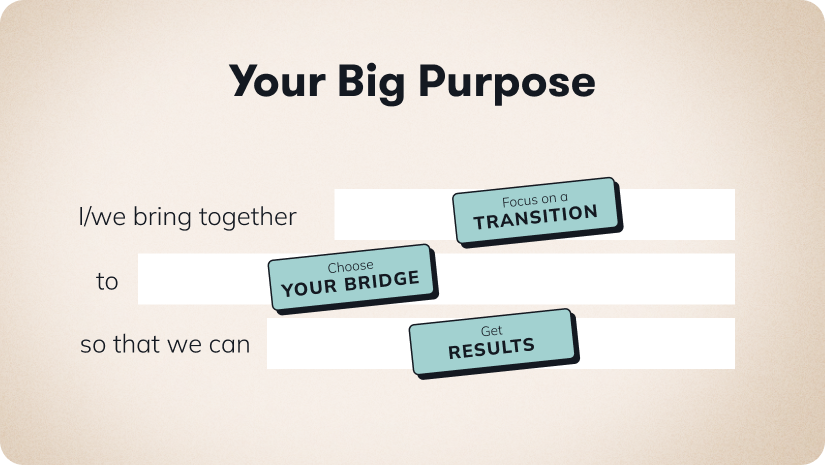
3. Plan a program
Create a coaching program to help your Ideal Members achieve transformation. Resist the urge to give them everything you know immediately. Instead, give them only what they need to get what they want RIGHT NOW, leaving room for more growth and transformation they haven’t yet imagined.
This makes it more likely they’ll succeed!
Try our Coaching Business Name Generator.
4. Create an offer
You’ve understood your Ideal Member and how you’ll help them get the transformation they need. The next step is to actually create the offer. Here are a few tips for pricing your high-ticket coaching offering that that we learned from pricing online courses:
Pricing is tough. But think about “value based pricing” and what a transformation is worth to your Ideal Member. For example, a coach who helps an executive land a $50,000 raise is worth a high-ticket price!
Take it to your Ideal Members. You can run it by the group of people you’ve already talked to. Some of them might even be your first clients.
Don’t worry about being exclusive (or people saying no). A high-ticket offer by definition is not for everyone.
Highlight value. Whether it’s the intimacy of 1:1 coaching, an exclusive mastermind, or a premium branded coaching platform, create an offer that highlights why you’ll be great to work with.
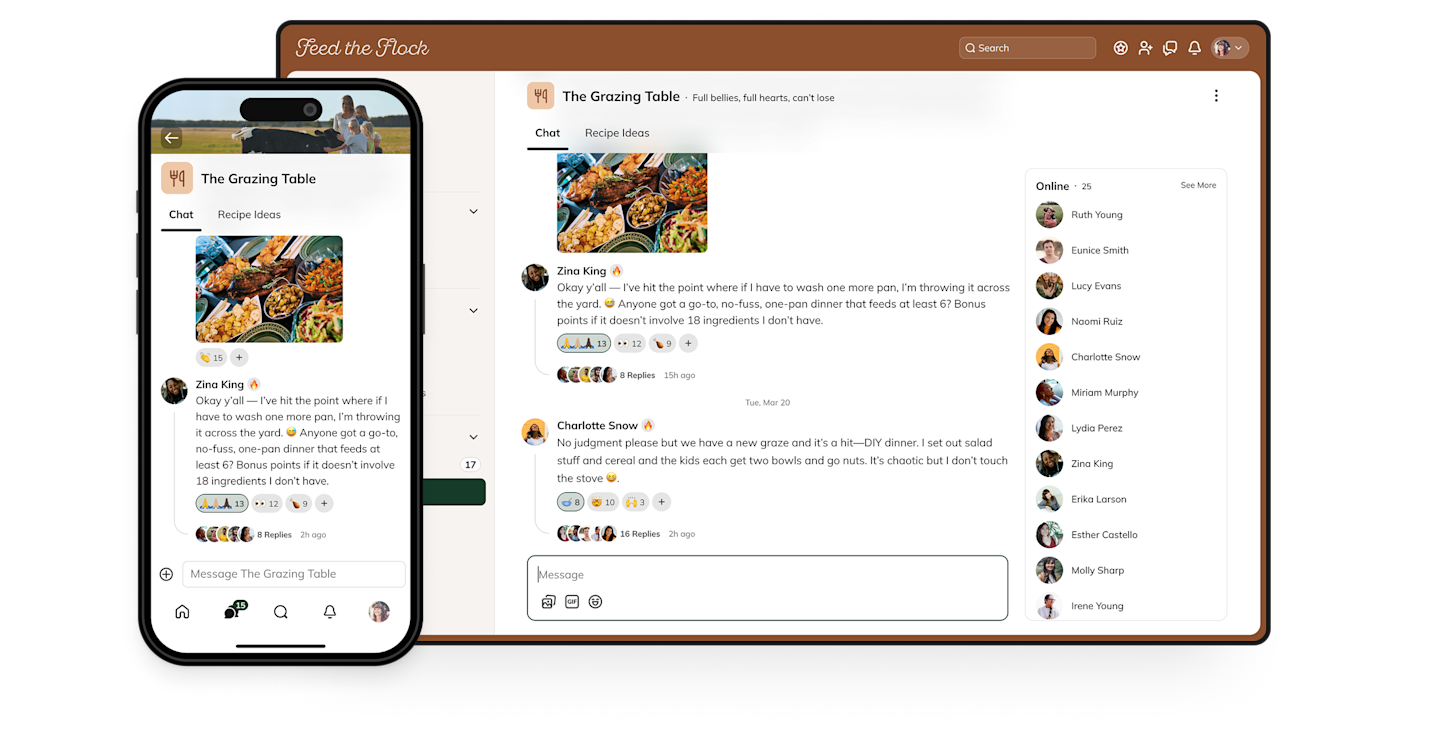
5. Exceed expectations
Do everything in your power to help members succeed. In a world of people making big promises without results, it could be easier than ever to get raving fans:
Deliver what you promise! Over-deliver even.
Members who are over-the-top excited to tell others about your results are the raving fans your business needs to thrive.
At every turn, reassess what you’re teaching. Be honest with yourself about whether it’s helping your members succeed. Cut what’s not. And adapt.
6. Create members
We’ve become passionate about creating members over customers. Customers buy. Members belong.
Here’s how this changes your approach to high-ticket coaching.
Your only job is not to be the jedi master who knows all. You can expand your focus, becoming the Host who brings people together. Give coaching clients a place to belong: a community. It’s incredibly beneficial for businesses– and a recipe for wild growth and raving, word-of-mouth fans of your program.
Find ways to get members engaged and connected to each other:
Masterminds and hang-outs
Group coaching
Accountability partners or groups
Open chats & messaging
Discussions
You’ll need to find what fits your members, but you’d be amazed at how this shift can launch your community flywheel business.
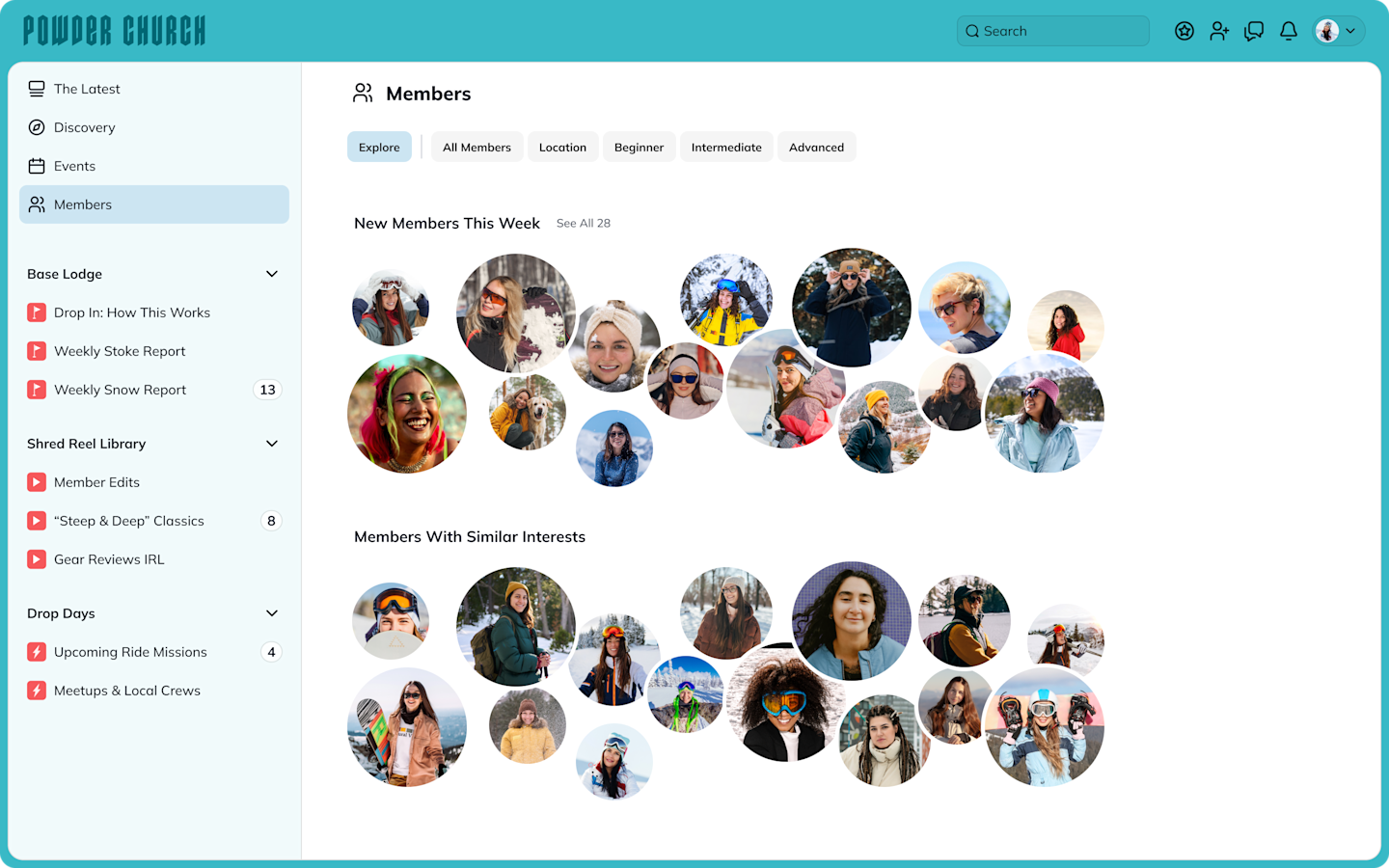
Mistakes to avoid for high-ticket coaches
1. Don’t promise results you don’t know how to get
Every high-ticket coach needs to sell a transformation. And it needs to be a transformation you actually know how to deliver for your clients and members.
Does this seem obvious? Because apparently it’s not–at least out there in internet land.
Here’s why you know how to get members high-ticket results:
You’ve gotten them for yourself (you’ve been where they are)
You’ve had training to provide them.
You’ve gotten them for other people.
If you check 2 out of 3, you’re in a great place to offer high-ticket coaching.
2. Don’t give it all away
It’s easy to think you need to give it all away. It’s the logic of social media. A “free” opt-in. A free community.
There’s a balance here.
People need to know you’re the right coach. They need to know they can trust you. And sure, offering a webinar or freebie can help with that.
But there’s a limit.
Here are a few problems with giving too much away for free:
Noise: Filling your calendar, sales funnels, community, etc. with people who are just there for free stuff is a great way to burn yourself out. AND, ironically, it turns off your actual potential high-ticket buyers. The psychology of high-ticket applies here; you’re selling a ton of value to fewer people, not trying to mass market this thing. You can have a life-changing business with as few as 10 members.
Effort: We see free memberships and communities can easily get filled up with welcoming and moderating people who aren’t even going to stay.
Unserious members: Filling up a membership, event, webinar, etc. with people who aren’t serious about doing the work not only wastes your time. It also boosts your potential failure rate. There will be no shortage of people in any program who aren’t serious about doing the work, but will blame their failure on the Host. Avoid this by charging something!
A cautionary tale.
One of our Mighty Pro Hosts–a popular YouTuber–created a large free community to support their mystical courses and high-ticket programs. Tons of people came in. But most of those people weren’t serious. And a tiny percentage were.
They switched from a free community to a paid one.
“The vibe changed in a good way! The paid members are more positive and much more powerful. We’re seeing new members join every day.”
Another Host using Mighty Pro started with a free community. She’s an author, keynote speaker, and teaches courses for people with a drive to improve their lives. With a free community, she saw 15,000 members posting selfies and chatting. Cool! But it was never about that number. She wanted people to push themselves and improve their professional skills.
A paid membership made all the difference for her too. And the smaller group brought instant revenue and people who were serious about transformation.
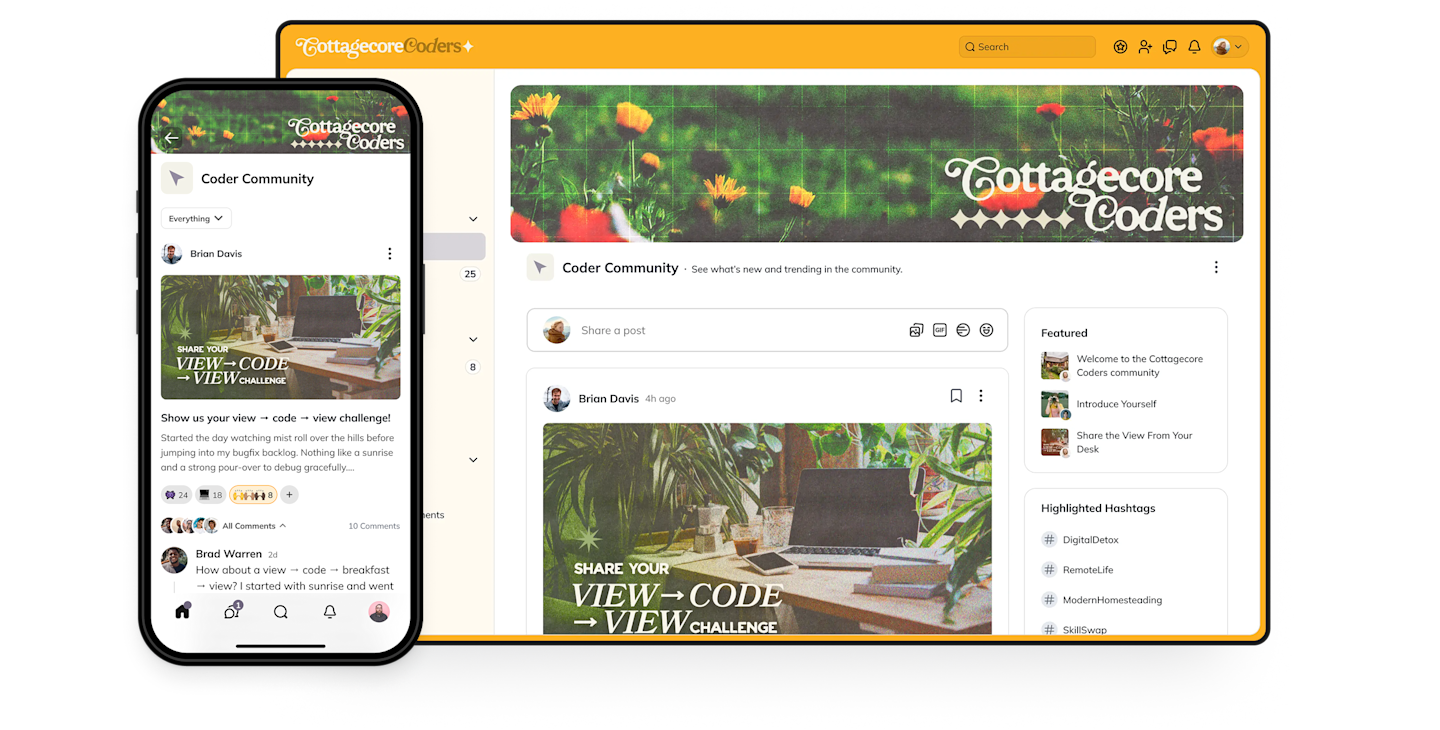
3. Don’t make the program too short
Here’s another mistake new coaches make. They want to be flexible. And so they make a commitment too short. “Come sign up for a month to try it.”
The thing is, amazing results take time. A few weeks might not move the needle. But months and years can!
One of our Hosts runs a mastermind group for entrepreneurs. They switched from a three-month coaching program to a 12-month commitment. The results was more value. More transformations. And even if members missed a few sessions, it wasn’t the end of the world.
Another one of our Hosts does multi-year commitments. Her programs are ultra-premium, specialized, and valuable and she requires a lot of commitment, which works well for making sure people achieve the results and transformation they signed up for.
Longer commitments mean you can charge higher and likely results in smaller groups.
4. Set reasonable expectations
This seems counter-intuitive. And seems to contradict what we said above.
But here’s the thing. High-ticket coaching programs are often created for busy people: professionals, founders, or entrepreneurs.
So while you should absolutely dream big, set a vision, and keep them accountable, do remember that your successful busy clients may miss a session occasionally. They might go a few weeks without doing homework.
It can be easy to worry about this.
But at the end of the day, you can’t do the work for them.
Here are a few ways to help your clients succeed, even if they are busy:
Create longer programs. Like we talked about above.
Offer more async options. Recordings, async courses, readings, etc. can make it easier for busy people to put in the work.
Be flexible. Give people the option to change times if they need.
BUT also be encouraging. They signed up for your program, and they value it. Try to hold members accountable as much as possible.
5. Don’t build on Facebook Groups
Facebook Groups have next to no features for actually running a high-ticket coaching business. You get no control of your content or who sees it. And large Facebook Groups are disadvantageous - they can either get banned, shut down, or temporarily suspended.
This can happen even if your topics aren’t controversial.
One globally recognized personal development celebrity was shut down moments before they were going to go live to thousands of customers. This celebrity’s content is all about positivity and achieving more in life!
Another entrepreneur we worked with runs high-ticket programs for founders and CEOs and had his Facebook Groups disabled. He’s teaching founders how to hire people and scale their operations—hardly controversial!
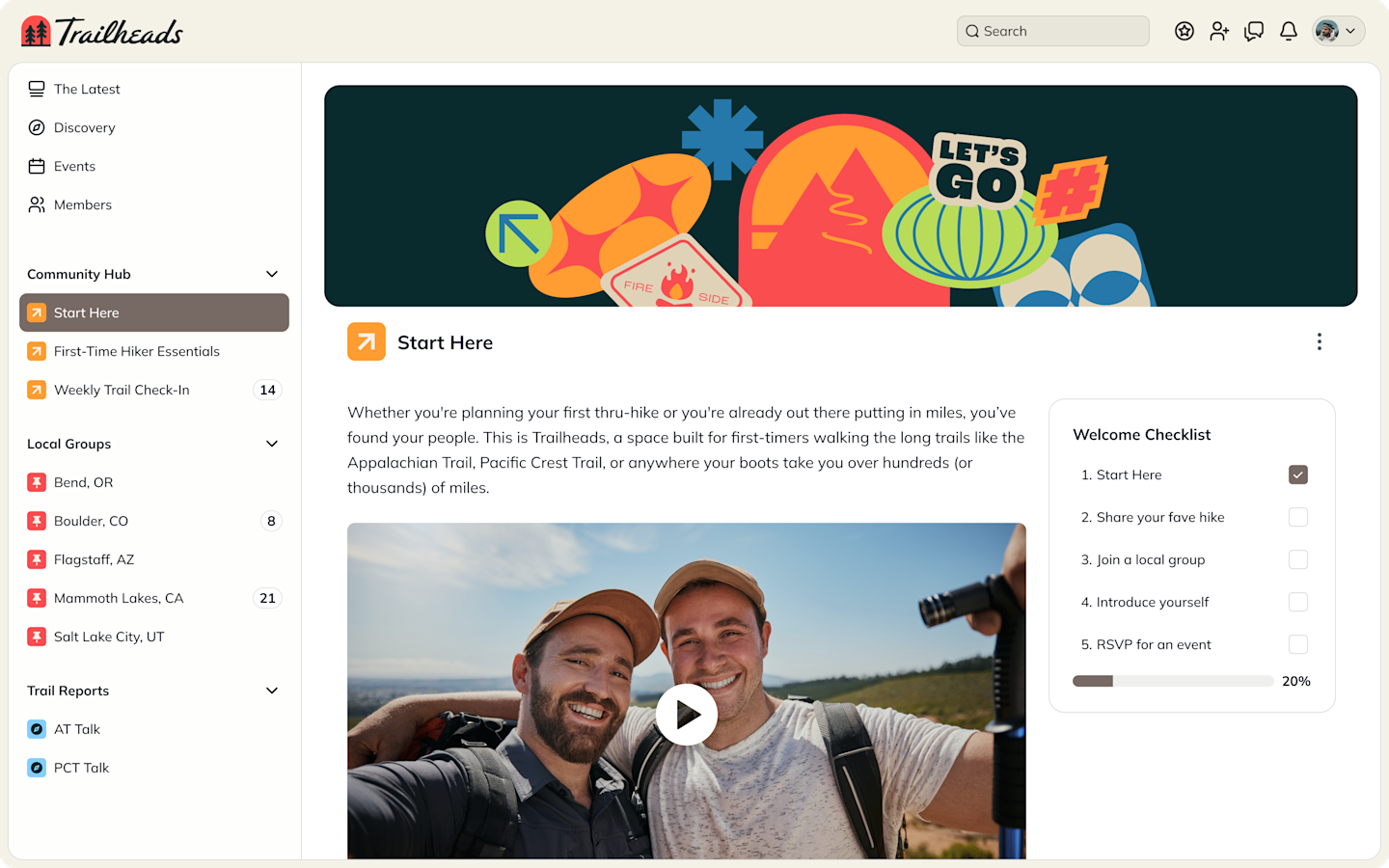
We’ve made good software our obsession, creating people magic that snowballs your business success. Members are connected to each other. It’s easy to collect payments and build your brand.
At the end of the day, this stuff matters to your business. It’s not just about “features” or a tech stack. It’s about creating an experience that actually helps your clients and members get the results they need, and there are alternatives to Facebook Groups that do just that.
Many coaches see the difference fast.
One Mighty Pro Host we worked with made the move from Facebook Groups to her own branded apps. Her community directed towards empowering women covered some sex positive content, and Facebook didn’t like that. Nobody saw her content.
“I was shadowbanned on all the Facebook apps,” she told us. “My business grew 5x since moving away from Facebook Groups. Moving into my own apps has been the most incredible business.”
6. Not raising your prices
One lesson we see our Hosts learn again and again is that it’s okay to raise your prices.
What you haven’t realized is that you’ve likely vastly underestimated the value of your programs.
As you’ve been scaling, you focused your marketing and content to better attract your Ideal Member, you’ve improved your coaching impact, and you’ve improved your member experience by moving away from Facebook Groups. Maybe even you’ve launched your own branded white-labeled apps, giving members a premium way to access your community, coaching events, and courses in one place.
The result? You’re delivering way more than before. And it’s time to raise your prices to match that value.
One of our Hosts hit the predictable wall and realized that their low-priced courses did not give them the financial foundation they needed to deliver a successful high-ticket coaching program. They made the leap and 10x’d their price.
“More money came in immediately,” they told us. “Raising our prices made us focus on the people that would actually purchase higher ticket programs. We needed to stop serving members who just were not right. We’ll build something for them in the future and we like them, but the people who are willing to pay more, they’re coming in ready to go.”
7. Having the wrong tech
Did we mention we care about software? Using amazing coaching software on an all-in-one community platform helps you put business growth on autopilot, reaching the people you want to reach.
Falling into a whole bunch of software solutions by accident and trying to stitch them together is a nightmare.
This is what we see:
Someone heard Kajabi or Thinkific were good course platforms for coaches, and bought them.
Facebook Groups seemed easy, so they built a community there.
They needed to host videos and events so bought WebinarNinja, Crowdcast, Vimeo, and maybe even a conference platform.
They needed landing pages and funnels so they bought ClickFunnels.
They’re sending automation emails with ActiveCampaign.
It’s software for everything, but nothing really works well. Not for you. And not for your members.
As one Host told us,
Bringing your entire coaching program—including courses, community, weekly coaching calls, livestreaming, and even conferences—into your own coaching platform or even your own branded apps is the way to simplify your tech stack and improve the experience of your members.
While this delivers a much simpler community management experience for your team, it also simplifies the front of your house.
You have ONE app to promote in your Instagram content, website, or to mention on your podcast.
Members download it, purchase your programs, and can log in to access it all: the courses they’ve purchased, specific communities or challenges they get as part of your coaching events, event reminders and invites to virtual or in-person retreats you’re running, livestreaming, and mobile notifications to remind them of new discussions and upcoming coaching sessions. It’s all in one place. And that’s the software secret for running an amazing high-ticket coaching business.
Ready to start?
If you're ready to start building your high-ticket coaching program, come build with us! Mighty is G2’s #1-rated community platform, and home to more $1 million communities and memberships than any other.
Ready to start building your community?
Start a free 14-day trial to explore Mighty—no credit card required.
More like this
Join Mighty Community
Learn the principles of Community Design™ (and see them in action) alongside thousands of creators and entrepreneurs. It's free to join!
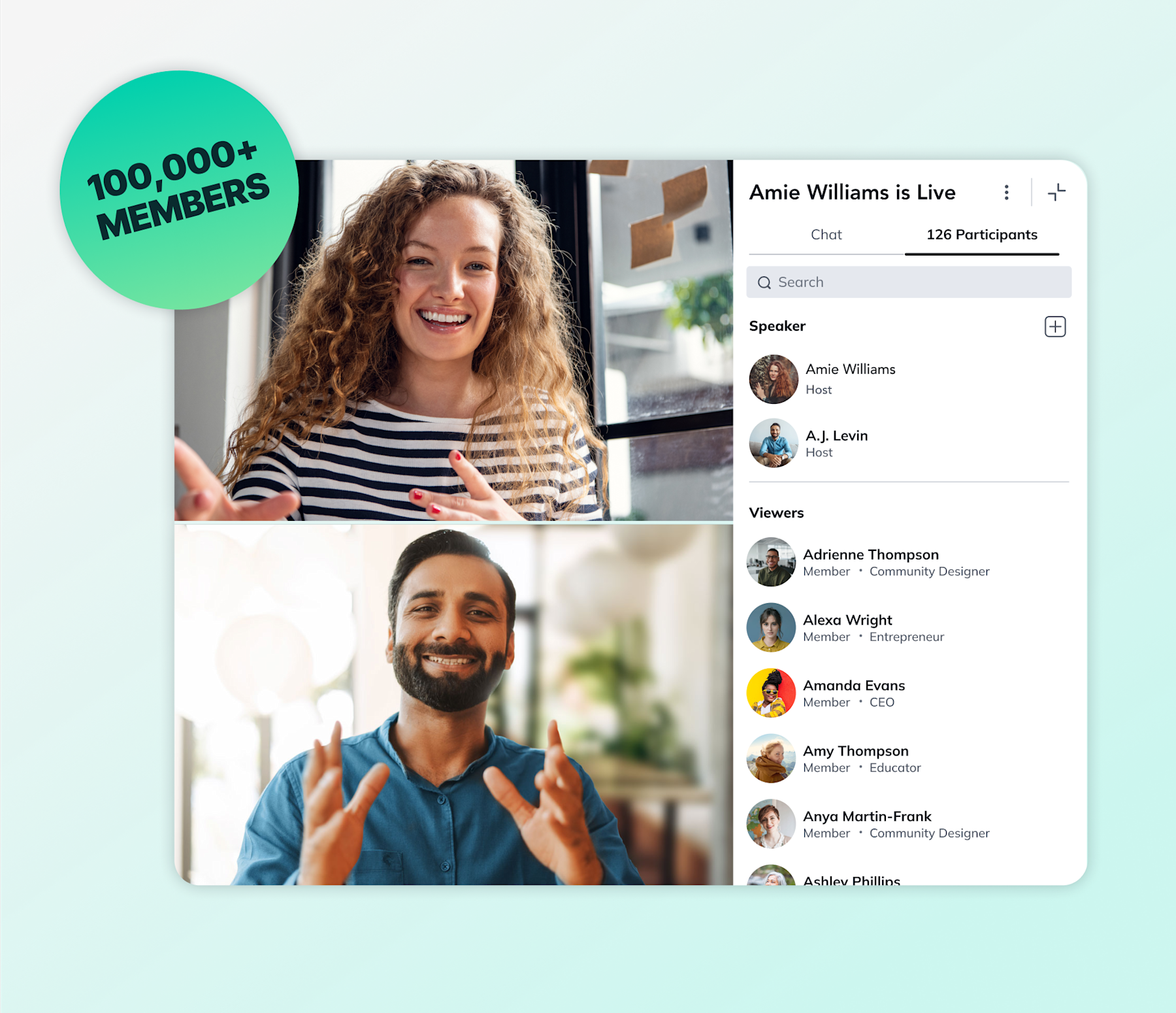
Online Courses
Creating a Course
Teaching a Course
Course Platforms
Selling a Course
Communities & Memberships
Community Platforms
Managing a Community
Building a Community
Growing a Community
Monetizing a Community
Content Creation
Creators & Entrepreneurs
Monetization
Content Creation
Starting a Business
Website Builders
Creating & Managing a Website
Events
Event Platforms
Hosting & Marketing Events
Branded Apps
Creating a Mobile App
Coaching Apps
Community Apps
Coaching
Mastermind Groups
Starting a Coaching Business
Coaching Platforms
Filter by Category
Online Courses
Communities & Memberships
Creators & Entrepreneurs
Events
Branded Apps
Coaching
Build a $1 Million Community
This free masterclass went viral—sign up to learn why.
